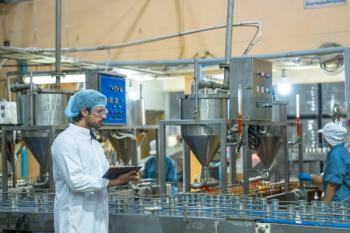Key Points
- Researchers at the Central University of Venezuela developed a methodology combining thin layer chromatography (TLC) and surface-enhanced Raman spectroscopy (SERS) to identify bioactive compounds such as theobromine and caffeine in cocoa. This method offers a rapid, accurate, and cost-effective alternative to conventional techniques like HPLC, especially for cocoa quality and origin assessment.
- The methodology is particularly suited for assessing the chemical composition of high-quality Venezuelan cacao, known for its complex organoleptic properties. The quantification of alkaloids is vital for classification and commercialization of cocoa products, which is especially valuable in regions with limited access to sophisticated lab equipment.
- The TLC-SERS approach supports high-throughput analysis and potential field deployment due to its compatibility with portable Raman devices. This opens possibilities for on-site cocoa quality control and suggests applicability to other food matrices needing rapid analysis of structurally similar compounds.
Researchers at the Central University of Venezuela (Caracas, Venezuela) developed a methodology for the analysis of cocoa bean extracts through the separation of molecules from the mixture using thin layer chromatography (TLC) and surface-enhanced Raman spectroscopy (SERS). This methodology lays the foundation for future quantitative applications in the evaluation of cocoa quality and origin, the scientists wrote in their paper, which was published in Analytical Science Advantages (1).
In recent years, there has been a considerable rise in interest regarding cocoa and its derivatives, propelled by its popularity in the food industry as a confectionery and nutritional supplement, in addition to its recognized health benefits (2). The trend has expanded scientific interest in the chemical and physicochemical characterization of these products. Despite being a small-scale cacao producer and exporter, Venezuela is recognized worldwide for the exceptional quality of its cacao, with varieties such as Criollo, Forastero, and Trinitario being highly valued for their unique organoleptic characteristics, which is derived from their complex chemical composition (2–4). In addition to the compounds which give cocoa its organoleptic properties, alkaloids such as theobromine and caffeine are of great interest because of the health benefits they offer, such as antioxidants. The chemical composition and in special ratio of these bioactive compounds is of particular significance for the classification and commercialization of cocoa, driving the need for a rapid, accurate and cost-effective methodology of analysis of these compounds (5–8)
From a scalability perspective, TLC allows for simultaneous analysis of multiple samples on a single plate, reducing the time per sample. SERS detection can be automated with micro positioning stages for rapid spot scanning. Furthermore, compatibility with portable Raman systems opens the possibility of on-site quality control at cocoa farms or production facilities, avoiding the need for laboratory-dependent techniques. This combination of factors makes the methodology particularly relevant for cocoa quality control, especially in regions where the ability to access high-end instrumentation is limited (1).
The methodology opens the possibility of rapid and accurate identification of theobromine and caffeine in cocoa products, which would be of great value for quality control and origin assessment, particularly in resource-limited settings, the researchers wrote. It also lays a solid foundation for its potential applicability to other food matrices where rapid and cost-effective identification and differentiation of structurally similar compounds is crucial. Their method enables the quantification of theobromine and caffeine via calibration curves, which would provide a cost-effective alternative to HPLC for cocoa quality control. The researchers expect that future research will focus on the precise quantification of these alkaloids, taking advantage of the robustness of this platform (1).
References
- Rodriguez, M.; Arteaga, R.; Katan, B. et al. Separation and Determination of Theobromine and Caffeine in Cocoa Beans Extract Using TLC-SERS: Identification and Computational Insights. Anal. Sci. Adv. 2025, 6 (2), e70033. DOI: 10.1002/ansa.70033
- Hernández-Hernández, C.; Fernández-Cabanás, V. M.; Rodríguez-Gutiérrez, G. et al. Rapid Screening of Unground Cocoa Beans Based on Their Content of Bioactive Compounds by NIR Spectroscopy, Food Control 2022, 131, 108347. DOI: 10.1016/j.foodcont.2021.108347.
- Kumar, S.; D'Souza, R. N.; Behrends, B. et al. Cocoa Origin Classifiability Through LC-MS Data: A Statistical Approach for Large and Long-Term Datasets. Food Res. Int. 2021, 140, 109983. DOI: 10.1016/j.foodres.2020.109983
- Kumari, N.; Grimbs, A.; D'Souza, R. N. et al. Origin and Varietal Based Proteomic and Peptidomic Fingerprinting of Theobroma Cacao in Non-Fermented and Fermented Cocoa Beans. Food Res. Int. 2018, 111, 137-147. DOI: 10.1016/j.foodres.2018.05.010
- Teye, E.; Anyidoho, E.; Agbemafle, R. et al. Cocoa Bean and Cocoa Bean Products Quality Evaluation by NIR Spectroscopy and Chemometrics: A Review. Infrared Phys. Tech. 2020,104, 103127. DOI: 10.1016/j.infrared.2019.103127.
- Stagnati, L.; Soffritti, G.; Martino, M. et al. Cocoa Beans and Liquor Fingerprinting: A Real Case Involving SSR Profiling of CCN51 and “Nacional” Varieties, Food Control 2020,118, 107392, DOI: 10.1016/j.foodcont.2020.10739
- León-Perez, D.; Medina, S.; Londoño-Londoño, J. et al. Comparative Study of Different Cocoa (Theobroma cacao L.) Clones in Terms of their Phytoprostanes and Phytofurans Contents. Food Chem. 2019, 280, 231-239. DOI: 10.1016/j.foodchem.2018.12.072
- Rodríguez-Carrasco, Y.; Gaspari, A.; Graziani, G. et al. Fast Analysis of Polyphenols and Alkaloids in Cocoa-Based Products by Ultra-High Performance Liquid Chromatography and Orbitrap High Resolution Mass Spectrometry (UHPLC-Q-Orbitrap-MS/MS). Food Res. Int. 2018, 111, 229-236. DOI: 10.1016/j.foodres.2018.05.032






